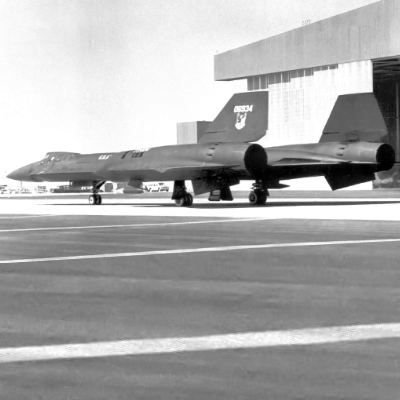Innovative Technologies in Defence 28 June 2024
We present to you some of the few defense technologies that are being deployed or on the drawing board. It remains to be seen which of the in-development systems see the light of day.
Some of the technologies have been taken from DARPA. Take a look -
DARPA\'s Transformer (TX) program seeks to bring together the utility of a ground vehicle and the navigation properties of a helicopter in a hybrid vehicle that would feature maximum flexibility of movement (as pictured, above.) Applications could include transporting troops and supplies to the battlefield quickly, medical evacuation, and more. The design calls for a vehicle capable of transporting up to four people and that can be operated by a typical soldier as well as a trained pilot.
DARPA\'s Nano Air Vehicle (NAV) program aims to develop a miniscule \"air vehicle system\" that\'s less than 15 centimeters long and weighs less than 20 grams. One experimental design incorporates flapping wings, disguised here as a hummingbird, making it possible for the device to navigate both indoors and outdoors. DARPA expects the NAVs to push the limits of aerodynamics and maneuverability.
A \"disposable aircraft,\" the CICADA Mark III is comprised simply of a printed circuit board, which minimizes wiring and makes it fast and inexpensive to assemble. (CICADA stands for Close-In Covert Autonomous Disposable Aircraft.) Resembling a toy airplane, it can accommodate light payloads, such as chemical, biological, and other signals intelligence sensors. Other electronic payloads can be incorporated by updating the circuit board and \"re-winging\" the aircraft.
A small and quick: X-51A Waverider attached is a hydrocarbon-fueled experimental craft travels in the Mach 4.5 to 6.5 range. In a test flight last June, the X-51A was released at an altitude of 50,000 feet. Future applications for hypersonic flight include space travel, reconnaissance, and commercial transportation.
Credit: Bob Ferguson/Boeing
DARPA\'s experimental HTV-2 aircraft is capable of flying at Mach 20, or 20 times the speed of sound, for a few minutes at a time. However, a test of the system last August (HTV-2\'s second test flight) had to be cut short due to a \"flight anomaly\" that was most likely the result of degradation to its aero shell exterior. The HTV-2 initiative is tied to a DOD goal of being able to reach any destination in the world in less than an hour.
Credit: DARPA
The U.S. military wants a faster, cheaper way to get small satellites into orbit. DARPA\'s Airborne Launch Assist Space Access (ALASA) program would do that with an aircraft designed for the job. The program aims to launch 100-pound satellites for less than $1 million per flight, and without extensive planning. ALASA would provide the capability to launch a satellite within 24 hours from a runway anywhere in the world.
Credit: DARPA
Suppose you need an image or video of any place on earth, and you need it right now. That\'s the challenge that DARPA is addressing through Membrane Optical Imager for Real-Time Exploitation (MOIRE), a geosynchronous orbit-based system that uses a membrane optic etched with a diffractive pattern to focus light on a sensor. Think of MOIRE as a very large (60 feet across) lens in space that could be used to peer into off-limits areas or for missile defense.
Credit: DARPA
The Urban Photonic Sandtable Display employs advanced 3-D technology to create a 360-degree, 3-D holographic display for use in battle planning. A team of up to 20 planners can view the large-format, interactive display, according to DARPA. (No special 3-D glasses required.)
Credit: DARPA
Can a computer chip mimic the human brain? That\'s the goal of DARPA\'s Systems of Neuromorphic Adaptive Plastic Scalable Electronics (SyNAPSE) program, which aims to develop systems that not only mimic the brain, but do so at biological scale. That requires development of integrated circuits that are packed with electronics and integrated communications that approximate the function of neurons and synapses. The ultimate goal is to build systems that \"understand, adapt, and respond\" to information, says DARPA. Potential uses include robotic systems and sensory applications.
Credit: IBM
The X-56A Multi-Use Technology Testbed (MUTT) is a prototype unmanned aircraft made of lightweight, flexible materials that\'s being developed by the Air Force Research Laboratory in collaboration with Lockheed Martin. Its long, thin wings (28 feet across) are susceptible to vibrations, or flutter, that results from air flow and turbulence. Engineers plan to use MUTT\'s flight-control software to find ways to minimize flutter. That knowledge will inform the design of the proposed X-54 aircraft, which is intended to demonstrate technologies that muffle sonic booms, potentially opening the door to supersonic commercial flights over the United States.
Source: http://www.informationweek.com/








